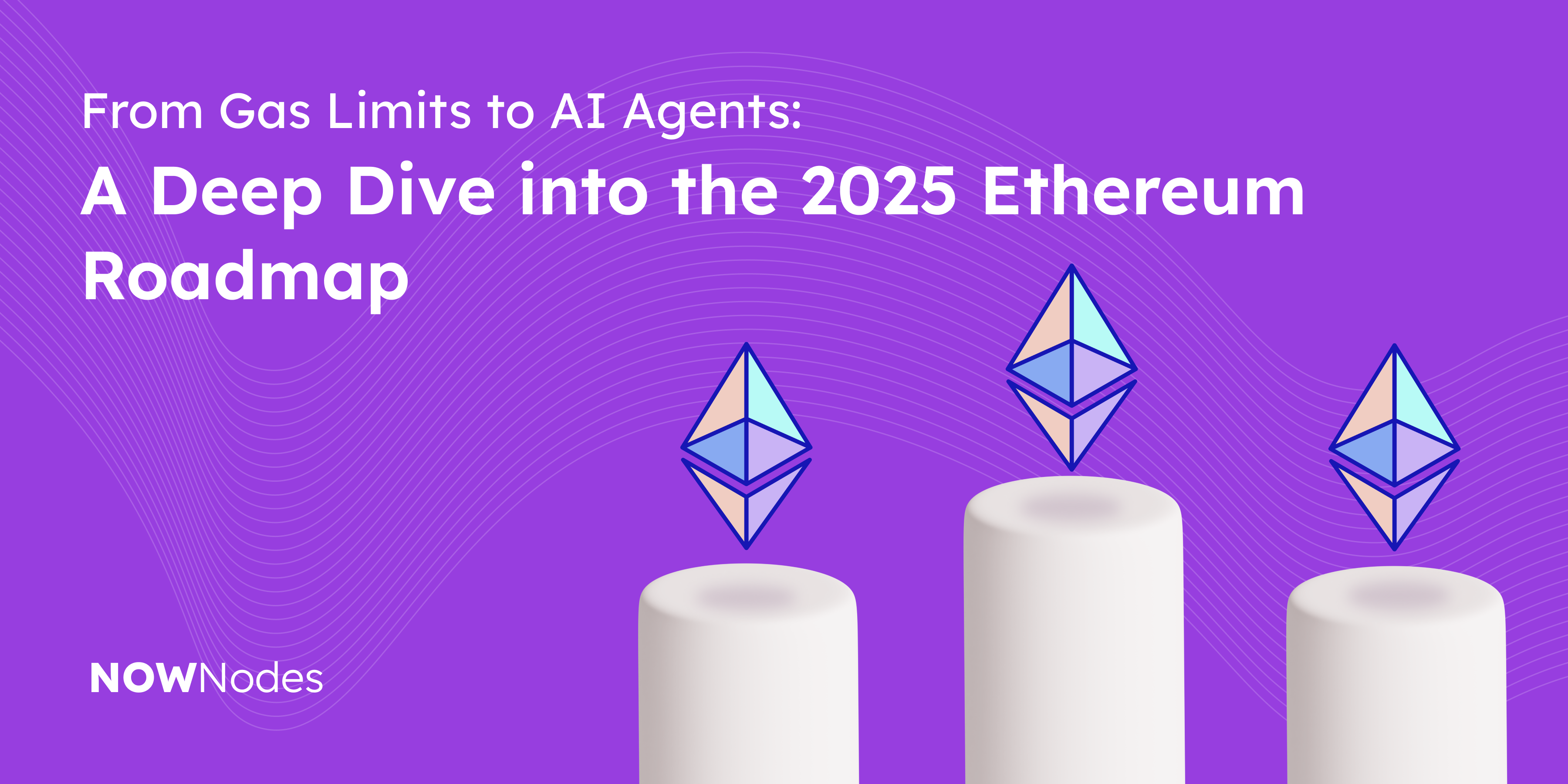Ethereum roadmap is here! The focus is shifting from theoretical idealism toward practical engineering — scalability, performance, simplicity. This isn’t a pivot; it’s a natural evolution. The network is maturing into what it was always meant to be: a general-purpose trust layer for global digital interaction.
In this piece, we break down Ethereum roadmap, its technical priorities, and what it all means for developers building in and around the protocol.
Ethereum roadmap: Scalability and Performance
Ethereum roadmap is prioritizing structural scalability at the base layer — not through compromise, but through refined data logic.
At the core of the near-term roadmap is the implementation and continued refinement of BLOB-carrying transactions, introduced with EIP-4844 (proto-danksharding). These are off-state, ephemeral data structures that allow Ethereum to publish large datasets (e.g., rollup proofs) without bloating the main state tree.
This design marks a shift: Ethereum Layer 1 is no longer just a settlement layer — it’s becoming an optimized data availability layer for Layer 2 ecosystems. The result? Lower costs, more predictable throughput, and a sustainable performance baseline for high-frequency applications.
In other words, combined with ongoing client optimizations and network simplification, Ethereum is becoming leaner and more performant under the hood — without sacrificing decentralization.
Faster Upgrade Cycles, More Predictable Releases
Vitalik Buterin confirmed that the core dev community is ready to shorten the time between hard forks. Moreover, instead of long waits between massive releases, Ethereum will move toward a cadence more aligned with modern software engineering: frequent, scoped, and iterative updates.
Here’s what’s next:
- Pectra (scheduled for May 7, 2025): a transitional upgrade combining Cancun-Deneb improvements with groundwork for future account abstraction and wallet UX features.
- Glamsterdam: a follow-up upgrade focused on gas limit increases, calldata optimization, and potential improvements to the consensus layer. If development finishes early, it could ship ahead of schedule.
For developers, this means more frequent changes in EVM behavior, gas economics, and client APIs. Expect higher demand for automated testing, testnet participation, and continuous deployment strategies.
What’s new in Ethereum roadmap? L1 Token Support, RWA Infrastructure
Despite the exponential growth of L2 networks, Ethereum L1 will continue to support token issuance and serve as the anchoring layer for real-world assets (RWAs) and fiat-backed stablecoins.
Moreover, this is significant for protocol builders and institutions alike. With the upcoming improvements in execution layer performance and calldata structure, operating directly on L1 may once again become viable for high-value, high-integrity use cases.
For developers, this means they can continue to design L1-centric smart contracts for tokenized assets and stablecoins — with reduced costs and higher throughput on the horizon.
Long-Term Goals: AI Agents, Autonomous Machines, and Privacy by Design
The roadmap outlines several long-range goals that go beyond traditional smart contract logic:
- AI agents: autonomous entities capable of interacting with contracts, managing state, signing transactions, and reacting to on-chain or real-world stimuli. Think wallets that act, not just store.
- Autonomous machines: physical devices (IoT, drones, robotics) with native on-chain identity and the ability to own and spend cryptoassets, validate proofs, and interface with decentralized systems.
- Privacy primitives: continued investment in zero-knowledge tools, confidential execution, and granular access control — essential for regulated use cases and user-centric sovereignty.
- Open-source infrastructure: all innovations will remain open and modular, allowing independent teams and researchers to contribute, fork, and experiment. Ethereum wants to be an innovation substrate, not a locked platform.
What This Means for Developers
This roadmap isn’t just about Ethereum’s evolution — it’s about a shift in how developers interact with the protocol.
- Faster pace: you’ll need to keep up with more frequent updates. Staying current with testnets, tooling changes, and client behavior will become essential.
- Greater architectural rigor: modularity, upgradability, and cross-layer interoperability will define robust apps. Systems need to be ready for gas changes, calldata constraints, and execution-level adjustments.
- L1 relevance returns: Ethereum’s base layer is not being abandoned. For security-critical protocols and regulated applications, L1 remains a viable, high-value platform.
- Autonomous thinking: as AI agents and on-chain machines emerge, developers will need to architect for non-human interactions — designing contracts for behavior, not just human input.
Conclusion
In conclusion, Ethereum’s roadmap for 2025 marks a clear transition from ideation to implementation. The protocol is maturing — not through bloat or complexity, but by returning to foundational values: performance, simplicity, openness, and adaptability.
In this case, for developers, the opportunity is clear: you’re not just building dApps — you’re helping define the architecture of a new digital reality. Whether you’re optimizing calldata, designing zk-enabled workflows, or building agent-based systems, Ethereum is giving you the substrate to innovate with clarity and confidence.
NOWNodes is a blockchain-as-a-service solution that lets users get access to ETH Nodes via API. The service provides a high-quality infrastructure that is quick, cost-effective, and reliable. We have Service Quality Standards available for all partners.
Ethereum is under 24/7 surveillance – their availability and relevance are constantly being monitored. Get access to ETH Nodes NOW:



